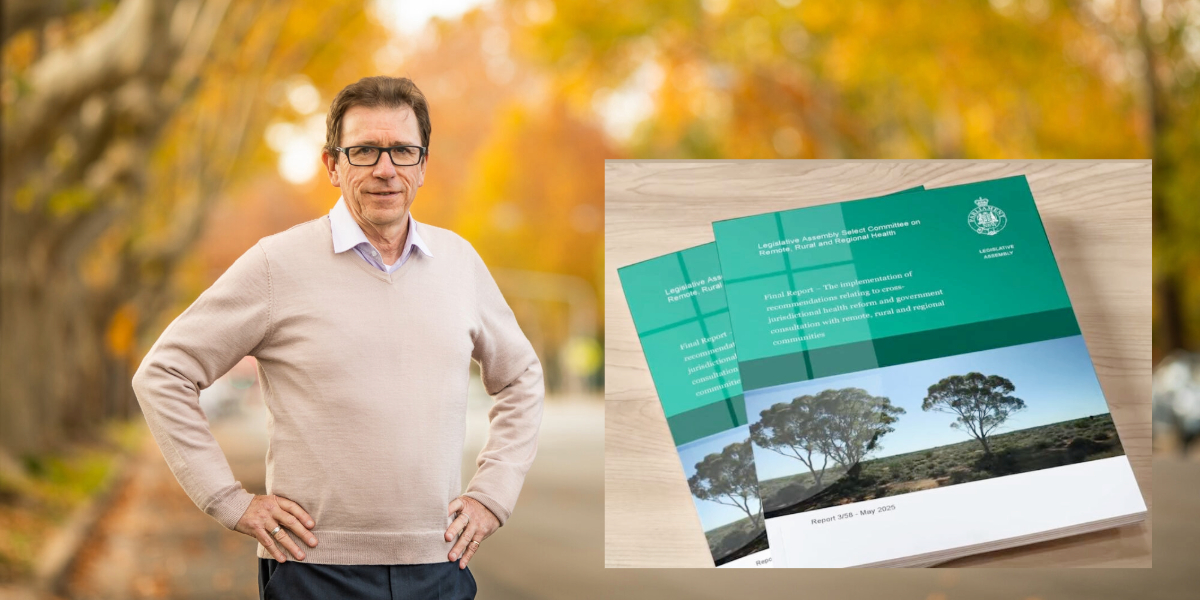A parliamentary committee has called for urgent structural changes to improve healthcare in remote, rural and regional New South Wales, warning that communities continue to face persistent barriers to access and a worsening crisis in primary care, despite government claims of progress.
The final report from the Legislative Assembly Select Committee on Remote, Rural and Regional Health, tabled this week, is the third in a series of inquiries examining the implementation of 44 recommendations handed down by the Legislative Council in a landmark 2022 report. This concluding volume focuses on cross-jurisdictional reform and government consultation.
The committee found that state and federal governance arrangements are failing to resolve issues in rural and remote primary care. While NSW Health has reported that 25 of the original 44 recommendations have been completed, the committee said this does not match the reality experienced by health workers and residents on the ground .
“There is a clear need for ongoing accountability measures to address the persistent issues that we continue to see in relation to remote, rural and regional health,” Committee Chair Dr Joe McGirr said.
The key finding was an unsurprising one – rural primary care remains in crisis. Doctor shortages have continued or worsened in many areas, and the report warned that over 40 towns across rural NSW are expected to lose their only general practitioner by the end of the decade. A case study of the towns of Gulgong and Mudgee highlighted how entire communities are left without access to basic healthcare, with some residents travelling over 100 kilometres to seek treatment or going without care altogether .
Persistent issues identified across the committee’s three inquiries include poor workplace culture, staff shortages, and overreliance on locum doctors. The committee also noted that non-government organisations continue to fill critical gaps in service delivery without being adequately supported.
While the expansion of the Rural Generalist Single Employer Pathway was acknowledged as a positive step, stakeholders expressed concern that broader systemic issues had not been resolved. Many submissions described the current funding model as fragmented and ineffective, relying on short-term, siloed, fee-for-service structures that do not support coordinated care .
Other key recommendations include the establishment of an independent NSW Remote, Rural and Regional Health Commissioner with statutory powers to evaluate programs, advocate for communities and report to Parliament.
The committee recommended a new long-term funding model for rural primary care, developed jointly by the NSW and Australian governments. It also called for clear shared governance mechanisms between Local Health Districts and Primary Health Networks to ensure joint planning and cooperation.
Member for Barwon, Roy Butler, was particularly welcoming of a recommendation to improve consultation with people in rural areas.
Monitoring and accountability featured prominently in the report’s proposed reforms. The committee called for six-monthly progress reports to Parliament by the Minister for Regional Health, and additional funding for the Audit Office of NSW to conduct performance audits on maternity services, workforce planning, leadership training and incentive schemes.
The committee acknowledged some progress, such as the rollout of the Rural Health Workforce Incentive Scheme and improvements to patient travel assistance, but said the overall pace of reform was too slow. It warned that significant changes will require time, sustained investment and genuine collaboration between all levels of government.
“This report sets out a recommended pathway forward to facilitate reform and ensure that the health needs of rural and regional communities are appropriately addressed,” Dr McGirr said.
The full report is available on the NSW Parliament website.
Don’t miss any of the important stories from around the region. Subscribe to our email list.

